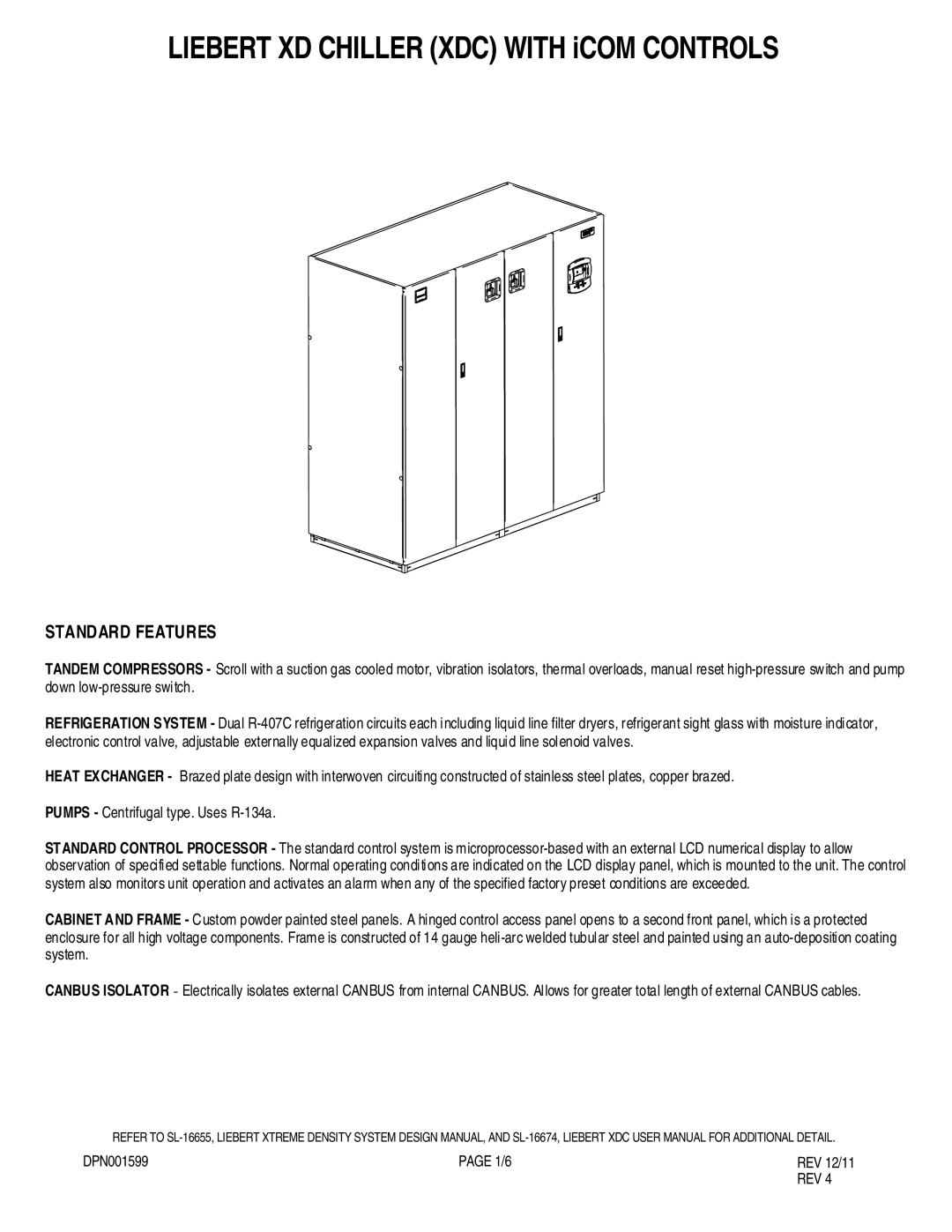DPN001599 REV 12/11 specifications
The Liebert DPN001599 REV 12/11 is a sophisticated power distribution unit designed to deliver reliable and efficient power management solutions in critical environments. This device is primarily utilized in data centers, server rooms, and other facilities where maintaining uninterrupted power is essential for optimal operations.One of the main features of the Liebert DPN001599 is its modular design, which allows for flexibility in configuring power distribution according to the specific needs of the installation. This modularity makes it easy to scale up or down as required, facilitating efficient energy management based on real-time demands.
The device incorporates advanced technologies such as real-time monitoring, asset tracking, and remote management capabilities. This enables users to gain insights into power usage and environmental conditions, allowing for better planning and management of energy resources. With features like user-friendly interfaces and mobile access, administrators can quickly respond to any issues that may arise, thereby minimizing downtime.
Another characteristic of the Liebert DPN001599 is its high reliability. The unit is built with durable components that meet stringent industry standards, ensuring long-term performance even in challenging conditions. Additionally, it includes inherent redundancy features, which help to prevent potential failures and ensure continuous power availability.
In terms of safety and compliance, the Liebert DPN001599 adheres to various regulatory standards, ensuring it meets the necessary requirements for electrical equipment used in mission-critical environments. This commitment to safety helps mitigate risks associated with power distribution in environments where failure is not an option.
Moreover, the Liebert DPN001599 is designed to manage energy more efficiently, promoting lower operational costs and reduced environmental impact. It supports various mounting options, making it adaptable to a range of setups, from traditional rack-mounted systems to standalone configurations.
In summary, the Liebert DPN001599 REV 12/11 is an advanced power distribution solution characterized by its modular design, real-time monitoring capabilities, and high reliability. Its focus on safety and energy efficiency, alongside its adaptability to various environments, makes it a top choice for organizations seeking to enhance their power management strategies in critical scenarios.

